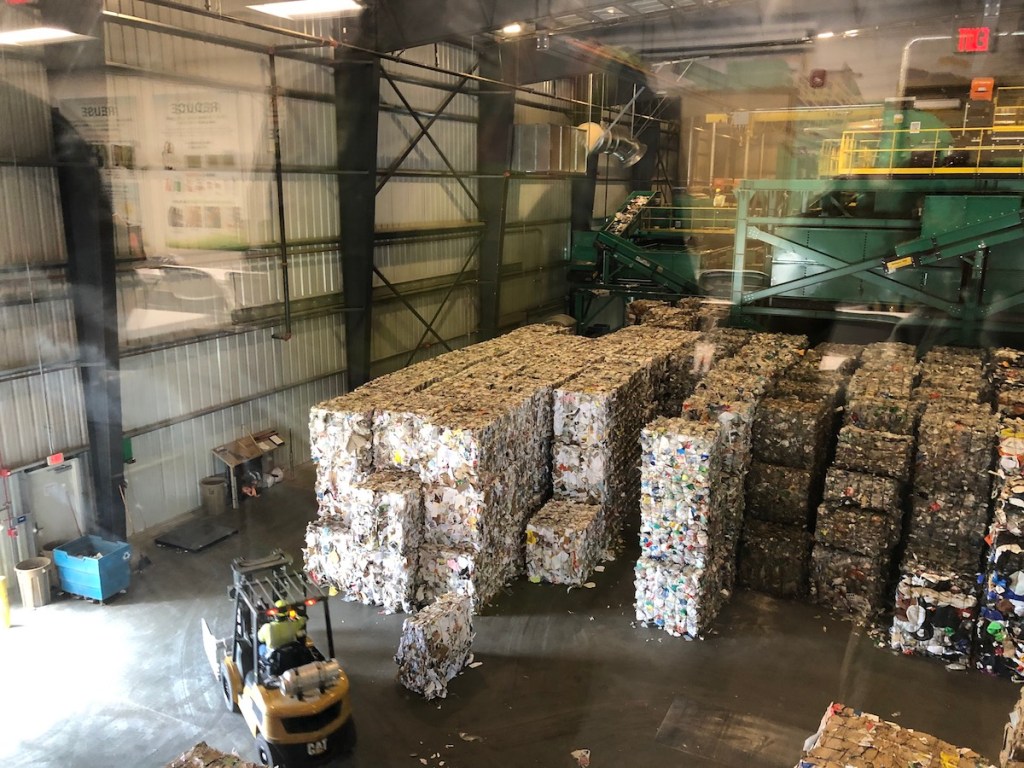The talk was all trash up at the Tajiguas dump on Friday afternoon, when elected officials, staffers, and contractors gathered to celebrate what Supervisor Joan Hartmann called turning a liability into an asset — namely, converting 200,000 tons of trash into recyclables, compost, methane, and energy every year. The new ReSource Center is a $150 million project that has been at least two decades in the making, involving the County of Santa Barbara and the cities of Santa Ynez, Goleta, and Santa Barbara: “We make the most trash!” called out Santa Barbara Mayor Cathy Murillo during the ribbon cutting.
About a half mile up from Highway 101, the Tajiguas facility has buried the South County’s trash for half a century and been deemed nearly full for close to a decade. The recycling facility — full of crisscrossing conveyor belts and gadgets from the Netherlands, Germany, and Spain to separate and move the bags, bottles, and papers — crunches them into bales. Some are sold — like plastics #1 and #2, dry paper and cardboard, and metals — and some, like thin plastic bags, are compactly buried.
What falls out — the 40-45 percent of the trash that’s organics like wet paper and food scraps — goes into the anaerobic digester, the heart of the energy-producing side of the dump. The digester, made by Bekon of Germany, will begin heating up next week, said John Dewey, head of Mustang Renewable Power Ventures, the lead contractor who put both the facility and the financing together. By August, the digester’s 16 tunnels will be at the optimum temperature of 104 degrees Fahrenheit to break down the organic trash mixed with 3 percent cow manure — from Harris Ranch near Coalinga — into methane and digestate.
Sign up for Indy Today to receive fresh news from Independent.com, in your inbox, every morning.
Dewey said the methane will be burned to produce 2 megawatts of power, which will be used to run the ReSource Center. The digestate, a rich, black fertilizer that is said to carry a terrific odor of cat pee, will cook for 28 days and will then be mixed with green waste, also chewed up and separated at Tajiguas, to eventually create compost.
Germany has about 9,000 anaerobic digesters like this one, Dewey said. California has 22. Santa Barbara has the first facility to host all the elements — from the waste mixture to compost production — in one place. “It goes from farm to table and back to the farm in a healthy soil cycle,” Dewey said. The end result is a clean-energy facility that contributes the single greatest reduction of greenhouse gases in the county, said Hartmann.
The process could add another decade of life to the landfill, as tons of trash that cannot be recycled or digested anaerobically continues to come through its gates in MarBorg trucks almost every day. But for the next many years, Santa Barbara will be “taking responsibility for its own waste material,” said Leslie Wells, who has worked on the Tajiguas project since 2006 and now heads the county’s Resource Recovery division. “We are going to manage our own waste in our own county and turn it into benefits for the community.”

